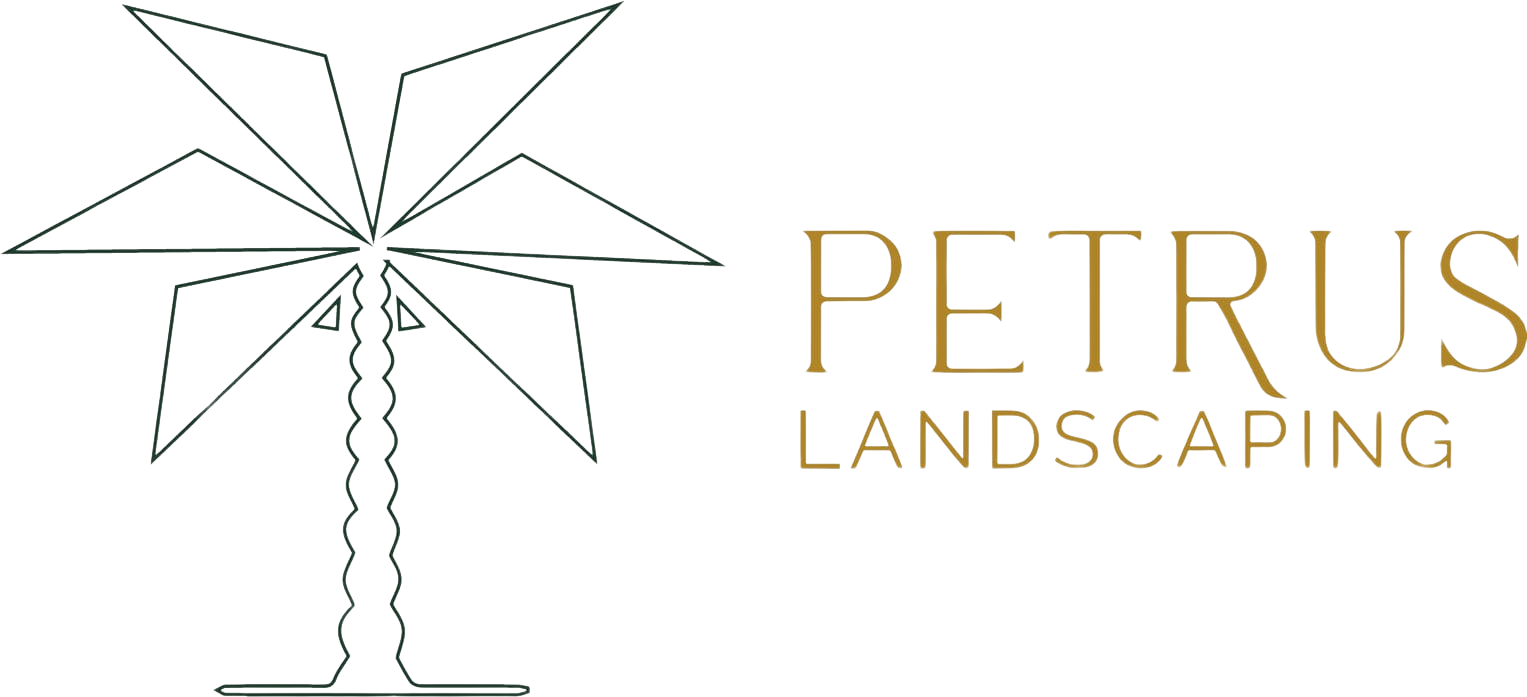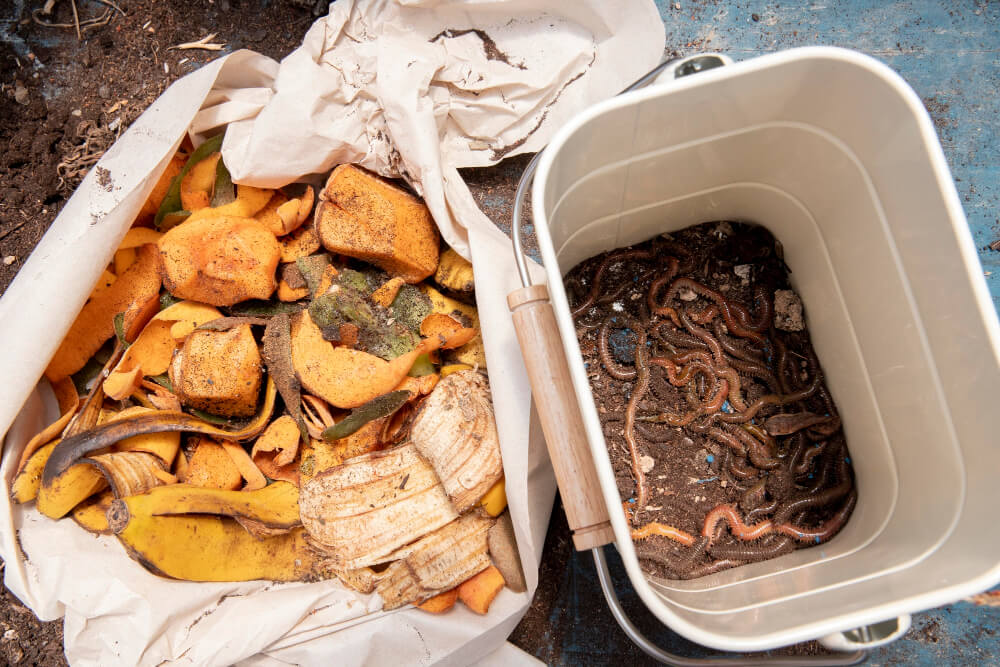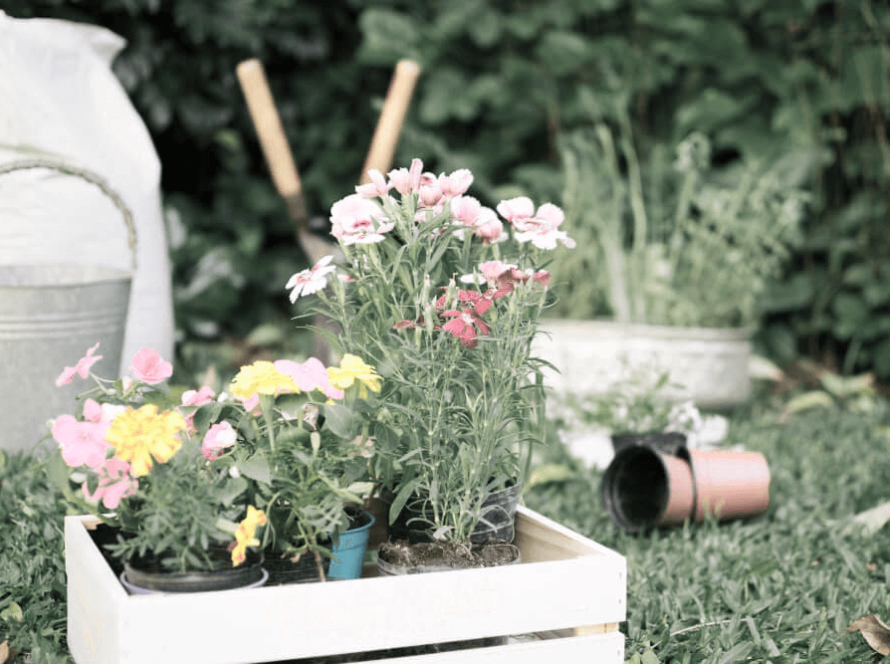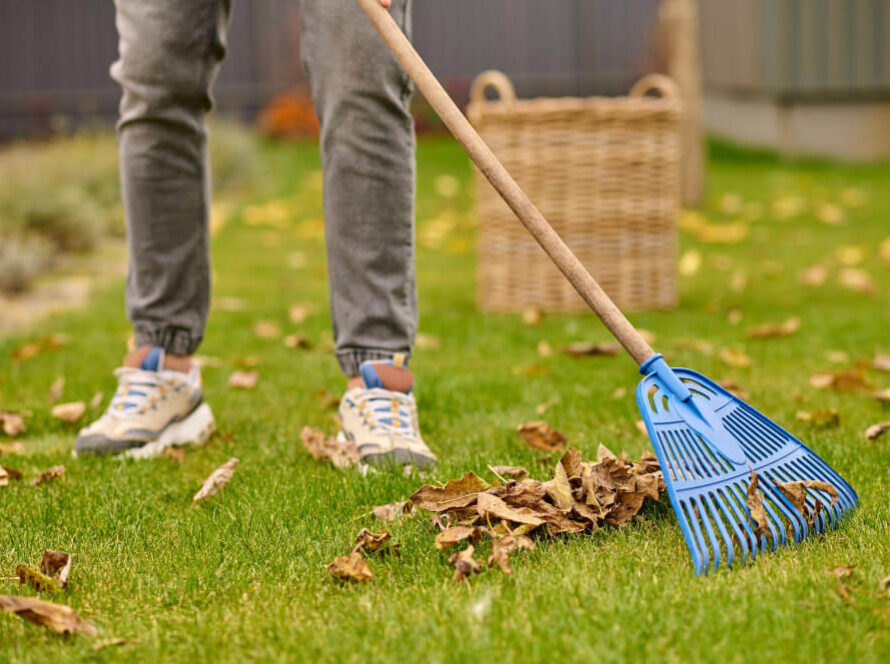In your pursuit of a sustainable and eco-conscious luxury landscape design in the Bay Area, composting is a fundamental practice. But how do you choose the perfect compost bin that aligns with your eco-friendly goals and complements your unique space? Let’s explore the various options and consider additional factors crucial for your green landscape.
Selecting the Right Compost Bin
The choice of the best compost bin ultimately depends on your preferences, the amount and type of waste you have, and the available space. Some bins might be more suitable for households with limited space, while others are better for large scale composting. Additionally, your level of involvement in the composting process, as well as your preference for speed and efficiency, can influence your choice.
Traditional Compost Bins
Wooden Bins: These are often simple to build and blend well with gardens. They provide good insulation and airflow, but may need some protection from animals. They will also benefit greatly from having the compost turned every few weeks with a pitchfork to help speed up decomposition.
Wire Mesh Bins: These are typically inexpensive and allow for good aeration, essential for the composting process.
Tumbling Compost Bins
Rotating Bins: These make turning the compost much easier, helping to speed up the decomposition process. Turning these bins adds some air flow and they are especially useful for people with limited mobility.
Vermicomposting Bins
Worm Bins: These incorporate worms to break down organic waste quickly. They also can add earthworm castings to your compost blend which are very beneficial to soil life. They are suitable for those with limited outdoor space.
Sustainable Material Selection for Your Compost Bin
When choosing a compost bin for your luxury landscape, it’s crucial to think about the materials it’s made from. Opt for sustainable and eco-friendly materials that reflect your commitment to the environment. In the Bay Area, where sustainability is a way of life, a compost bin crafted from recycled or reclaimed materials perfectly aligns with your landscape’s eco-conscious theme. This choice not only serves a functional purpose but also contributes to reducing your environmental footprint.
The Art of Proper Composting
Composting is a skill that every eco-conscious landscape enthusiast in the Bay Area should master. Here, we’ll delve into the intricate art of composting, which extends far beyond choosing the right compost bin.
Balancing Green and Brown Materials
The heart of successful composting lies in achieving the perfect balance between green and brown materials. Green materials, such as kitchen scraps, grass clippings, and fresh plant cuttings, are nitrogen-rich components that provide the necessary proteins for microbial activity. Brown materials, like dry leaves, straw, and paper, are carbon-rich and offer energy for the microbial organisms. Achieving this balance ensures that the composting process proceeds efficiently.
However, the ideal ratio of green to brown materials can vary slightly. A general rule of thumb is to aim for roughly 2/3 brown materials and 1/3 green materials. It’s important to note that too many green materials can lead to a stinky, slimy mess, while too many brown materials may slow down the decomposition process. In our Bay Area climate, the lush greenery and abundant plant clippings make it essential to understand this balance.
Maintaining Ideal Moisture Levels
Proper moisture content is critical for a successful compost pile. The composting microorganisms, like bacteria and fungi, require a moist environment to thrive. Insufficient moisture can slow decomposition, while excessive moisture may lead to unpleasant odors or anaerobic (low-oxygen) conditions.
In the Bay Area, where weather conditions can fluctuate, maintaining the right moisture level becomes even more essential. Here are a few tips:
- Add water when needed: If your compost pile appears dry, especially during our warmer, drier months, introduce water as necessary. You want the consistency to be similar to a wrung-out sponge.
- Use a cover: To protect the pile from excessive rain during the rainy season, consider using a cover. This helps maintain the moisture balance.
- Turn the pile: Mixing or turning the compost regularly is an excellent practice to distribute moisture evenly throughout the pile. It also ensures that every part of the compost receives the right amount of moisture.
Aeration Techniques
Aeration, or providing oxygen to the compost pile, is another crucial aspect. Oxygen is essential for the aerobic microorganisms responsible for breaking down organic matter effectively.
In the Bay Area, where many of our landscapes feature abundant vegetation and yard waste, aeration techniques can be particularly helpful. Consider these methods:
- Regular turning: Use a pitchfork or a specialized compost turning tool to aerate the compost by mixing it up. This adds oxygen and prevents compacting.
- Aeration tubes: Some compost bins come with built-in aeration systems. These allow oxygen to circulate without the need for manual turning.
Efficient waste management is far more than a simple eco-conscious choice; it is the cornerstone of your luxury landscape in the Bay Area. Here, we dive into the significance of efficient waste management, providing guidance for environmentally-aware readers seeking to optimize their composting efforts and reduce their environmental footprint.
Minimizing Waste at its Source
The first step in efficient waste management is minimizing waste at its source. By thoughtfully considering your consumption habits and the materials you introduce to your luxury landscape, you can significantly reduce waste. In the Bay Area, where sustainability is embraced, minimizing waste becomes more of a lifestyle choice than a chore. Consider the following strategies:
- Choose durable materials: Opt for landscape elements, furniture, and hardscapes that are built to last. This reduces the need for replacements and, consequently, waste.
- Mindful plant selection: Select plants that are well-suited to the Bay Area climate and your landscape’s specific conditions. This reduces the likelihood of plant loss and the need for replacements.
- Composting kitchen waste: Composting kitchen scraps and garden cuttings is an excellent way to divert organic waste from landfills while creating nutrient-rich compost for your luxury landscape.
- Responsible water usage: Implement water-wise irrigation practices to conserve water and promote the health of your plants. Wasted water is both an economic loss and a burden on the environment.
Recycling and Reusing
Recycling and reusing materials play a pivotal role in efficient waste management. The Bay Area’s commitment to environmental responsibility aligns perfectly with these practices. Consider the following strategies:
- Recycle green waste: Rather than sending yard clippings and garden waste to landfills, utilize local green waste recycling programs. These materials can often be turned into compost or mulch, which you can then reintroduce to your landscape.
- Reclaimed materials: In the Bay Area, a wealth of reclaimed materials is available. Consider using reclaimed wood, stone, or metal in your luxury landscape. This not only adds character to your design but also reduces the demand for new materials.
- Upcycling: Embrace the art of upcycling by repurposing items within your landscape. Turn old furniture into garden decor, or creatively incorporate unused materials into new projects.
- Recycling programs: Make use of local recycling programs for materials like glass, plastic, and aluminum. Diverting these items from landfills is a meaningful contribution to efficient waste management.
Community and Local Initiatives
In the Bay Area, your luxury landscape can become a beacon of eco-conscious living, not just within your property but also within the community. By participating in or promoting local initiatives, you contribute to the region’s commitment to environmental responsibility. Consider the following:
- Community composting programs: Many Bay Area communities offer community composting programs where organic waste is collected, composted, and then redistributed for local use.
- Educational outreach: Engage with local schools or community groups to share your knowledge and experience in eco-conscious luxury landscaping. By inspiring others, you extend the impact of efficient waste management.
- Support local eco-friendly businesses: Whenever possible, source materials and services from local businesses with a focus on sustainability. This contributes to the Bay Area’s ecosystem of eco-conscious living.
Seasonal Composting
The Bay Area’s ever-changing climate presents a dynamic canvas for your luxury landscape, and it’s crucial to incorporate seasonal composting practices that harmonize with nature’s ebbs and flows. By understanding how each season brings unique challenges and opportunities, you can ensure your landscape remains vibrant and ecologically responsible throughout the year.
Spring: Renewal and Preparation
Spring is a time of renewal, growth, and preparation. In the Bay Area, the soil warms up, and plants begin their growth cycle. To make the most of this season:
- Introduce green waste: As your landscape awakens, supplement your compost pile with fresh green waste like grass clippings and pruned branches. These materials are rich in nitrogen, vital for healthy compost.
- Monitor moisture: Spring showers can be abundant, so be mindful of your compost pile’s moisture levels. Ensure good aeration to prevent waterlogging.
- Plant cover crops: Consider planting cover crops like legumes or clover to improve soil structure and suppress weeds. These cover crops can later be turned into your compost pile.
Summer: Maintaining Balance
Summer brings warmth and longer days, which can both facilitate and challenge composting. To maintain composting efficiency:
- Aerate regularly: Higher temperatures in the Bay Area can speed up decomposition but may also cause drying. Turn your compost pile regularly to maintain aeration and even decomposition.
- Use mulch: Apply mulch to your landscape to conserve moisture and help maintain consistent composting conditions.
- Avoid overloading: Be cautious about overloading your compost bin, as excessive kitchen waste can attract pests. Balance green waste with brown materials like dried leaves and straw.
Fall: Nature’s Abundance
Fall is a time of abundance as trees shed their leaves, and your landscape prepares for the cooler months. To capitalize on the season’s offerings:
- Collect leaves: Gather fallen leaves from your garden and neighborhood to add brown materials to your compost pile.
- Include kitchen scraps: As you prepare fall feasts, incorporate kitchen scraps like vegetable peels and coffee grounds into your compost.
- Optimize moisture: Monitor moisture levels, especially if the fall season in the Bay Area is drier than usual. Maintain a damp, but not soggy, compost pile.
Winter: Slowing Down
Winter in the Bay Area tends to be milder, but it’s still important to adapt your composting practices:
- Shield from the elements
Ensure your compost pile is protected from heavy rain, which can lead to waterlogged compost. - Reduce turning
Given the cooler temperatures, the composting process slows down. Turn your pile less frequently to retain heat and maintain decomposition. - Keep kitchen scraps
Continue adding kitchen scraps, but avoid citrus peels or large amounts of acidic foods, as these can hinder composting. In the eco-conscious and forward-thinking landscape of the Bay Area, composting isn’t just a gardening practice—it’s a commitment to a sustainable way of life. This portion of the article delves into eco-conscious practices specific to the region, showcasing how your luxury landscape design aligns seamlessly with the Bay Area’s deep-rooted commitment to eco-conscious living. - Community Composting Programs: Sharing Sustainability
The Bay Area thrives on community engagement, and its community composting programs are a testament to this spirit. From San Francisco to Oakland, local initiatives have given residents the opportunity to participate in large-scale composting efforts. Community composting not only reduces individual waste but also fosters a sense of shared responsibility. By highlighting these programs, you can inspire your luxury landscape’s readers to join the movement, fostering a sense of eco-conscious camaraderie. - Sustainable Gardening Resources: Nurturing the Environment
Sustainability is at the heart of Bay Area living, and there’s no shortage of resources to support eco-conscious gardening. Local organizations and nurseries provide a wealth of knowledge, promoting sustainable landscaping practices. From native plant selections to water-wise gardening tips, these resources can guide your readers toward making informed choices for their luxury landscapes. - Waste Reduction Initiatives: A Greener Lifestyle
In the Bay Area, waste reduction isn’t merely an afterthought; it’s a way of life. Recycling, composting, and reusing are highly encouraged. Your readers will appreciate insights on how to reduce waste and make the most of their composting efforts. By emphasizing the importance of diverting waste from landfills, you’ll empower your audience to take responsibility for their environmental footprint. - Eco-Conscious Living and Luxury Landscaping: A Perfect Union
Your luxury landscape design goes hand in hand with the Bay Area’s commitment to eco-conscious living. By showcasing how your sustainable choices in landscape design align with the region’s values, you highlight the perfect union of luxury and environmental responsibility. Whether it’s through native plant selections, low-water irrigation, or sustainable materials, your design is a testament to the eco-conscious spirit that defines the Bay Area.
Your choice of a compost bin plays a pivotal role in fostering an eco-conscious luxury landscape design in the Bay Area. Yet, it’s only the beginning. To truly embrace sustainability, understand the science behind composting, focus on efficient waste management, adapt to seasonal variations, and integrate eco-conscious practices native to the region. With these elements in place, your luxury landscape will thrive while minimizing its environmental footprint.



